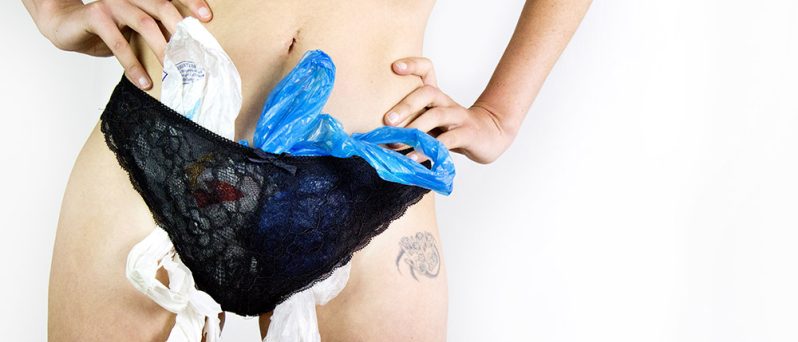Intimate Health
Steer your vagina clear from synthetic materials, perfumes and nasty chemicals with our gentle, effective and natural products.
We help keep your intimate skin in balance, Natracare is a more sensitive choice for your body.
A sensitive choice for your body
Worried about upsetting your sensitive skin? With us, there’s no need! Every material we use in our pads and tampons is non-allergenic to help prevent irritation and soothe intimate skin.
With Natracare you can expect:
✓ Breathable Protection
Plastic creates a super sweaty environment for your most intimate and irritable areas. Free from all that nasty plastic – Natracare lets your skin breathe all day long.
✓ Chlorine Free
Some methods of bleaching create toxic organic pollutants which remain in trace amounts in pads and tampons. Our products are totally chlorine free, keeping toxins out of your vagina.
✓ Suitable for Sensitive Skin
Personal care should never cause you discomfort. We use natural materials that are suitable for sensitive skin to protect your vulva from irritation.
Our pad promise
Plastic free
The issue: Plastic is found in the cover, the core and the backing of many pads.
Why: Plastic is added to disposable pads to increase their absorbency and ensure they’re leak-proof. We think that plastic in pads is unnecessary. What’s more there are natural alternatives available.
Effect: Plastic isn’t breathable. This means wearing a plastic based pad can create a sweaty environment for your vulva. It’s easy to not change a plastic-laden pad as frequently as you should. The plastic will make them last longer, creating an unhealthy, non-breathable environment.
Latex free
The issue: Latex is found in the backing of most conventional pads with wings.
Why: Latex is commonly used to help make the wings on a pad more flexible.
Effect: Latex is an allergen. This means it’s likely to cause irritation for some, and latex can even cause hives or anaphylaxis for people with more extreme allergies. Latex often isn’t listed on the back of the pack as many countries don’t require manufacturers to disclose their ingredients list.
Unscented
The issue: Believe it or not, perfume is a popular ingredient in pads! Added scents are usually found in the absorbent core.
Why: To make your vagina smell nice? Or to make you feel ashamed – as though you have to disguise your period? We’re not sure, but both are ridiculous. Your vagina smells wonderful the way it is.
Effect: Synthetic perfumes can act as an irritant – especially next to the sensitive skin of your labia. They make your skin itchy, inflamed, and uncomfortable. But at least your vulva will smell synthetically-scented, right?
No super absorbent gels or polymers
The issue: Super absorbents (SAPs) are petroleum derived polymer gels found in the absorbent core of a pad. You won’t find an incontinence pad without them, except for Natracare’s Dry & Light pads.
Why: Super absorbents can absorb 11x their own weight in liquid, so they can absorb a lot for incontinence and period products.
Effect: Super absorbents are an irritant and they’re also linked to dermatitis-style symptoms. They’re not kind to sensitive skin. They encourage you to wear pads longer than is hygienic because they keep going and going. Also, if you wear a pad with SAPs with too high an absorbency than needed, it will dry out your skin. A one-way pad to intimate irritation, if you will.
Surfactant free
The issue: Surfactants are a synthetically made material found in the absorbent core and cover of conventional pads.
Why: Surfactants are used as an absorbent additive in pads. This makes pads unnecessarily absorbent and unhygienically long lasting.
Effect: Surfactants are linked to allergic reactions to pads. Exposing your labial skin to the risk of inflammation and itchiness? No thanks.
No dioxin
The issue: Absorbent hygiene products, i.e. pads, nappies and incontinence products, are made from wood pulp and GMO cotton. These materials are bleached to clean and sterilise before use in manufacturing.
Why: Bleaching using chlorine produces a by-product called dioxin. This is a cheap, damaging method of bleaching that can leave trace amounts of dioxin in pads – delightful. But there are better, Totally Chlorine Free methods which don’t expose you to anything harmful!
Effect: Dioxin is carcinogenic and damaging to health. It is also bio-accumulative, meaning it builds up in the body over time. Even trace exposure can and should be avoided in products used regularly and intimately.
No dyes
The issue: Synthetic dyes are used on the cover or layer underneath of some pads.
Why: Purple or blue dyes are used to make pads appear more ‘hygienic’ or ‘medical’ or ‘pretty’. This is counterproductive and totally unnecessary!
Effect: Dyes can be an irritant. You don’t need exposure to an irritant which makes your period, or incontinence, any more uncomfortable.
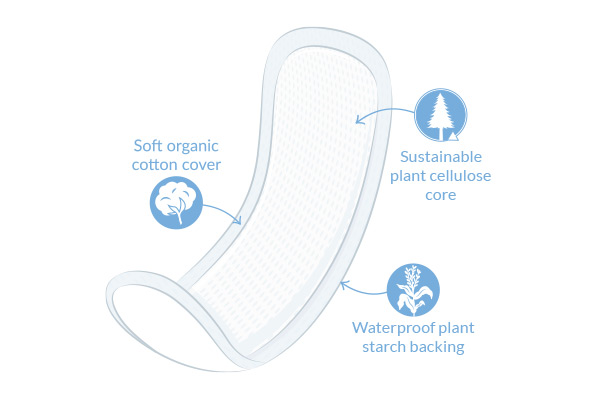
Our tampon promise
No rayon
The issue: Rayon is a material made from chemically processed wood pulp, it has a short straight fibre structure and is often found in tampons.
Why: Rayon is highly absorbent – used to make the tampon last longer and prevent leaks.
Effect: The rayon fibres in conventional tampons are so absorbent that they can dry out your vaginal walls! Due to their short and straight fibres, rayon is especially prone to fibre loss.
Plastic free
The issue: Plastic is commonly used as a ‘safety veil’ around the outside of the tampon, also described as a hygiene shield or security veil.
Why: Plastic wrappers are used to prevent fibre loss from manufacturers choosing to use rayon or short-fibre cotton in their tampons.
Effect: Well, you’re putting plastic inside your body. Some plastics are known hormone disruptors, and the plastic will also never biodegrade. That’s not good for your vagina or the planet!
No dioxin
The issue: Chlorine bleached materials can be found throughout your typical conventional tampon.
Why: Bleaching sterilises and cleans the materials used to make tampons. This makes tampons safer and hygienic to use, as well as whitening their appearance.
Effect: All tampons have to be sterilised during manufacture so that they are safe to use inside the vagina. But some bleaching methods create toxic organic pollutants which remain in trace amounts in materials in tampons. You then put this inside you. Totally Chlorine Free bleaching is dioxin-free and avoids this completely.
Surfactant free
The issue: Surfactants are a synthetically made material that can be found in the strings of tampons.
Why: Surfactants are used as an absorbent additive to help wick away liquids.
Effect: Surfactants are linked to allergic reactions. So conventional tampons expose your skin to the risk of inflammation and itchiness. No thanks.
No dyes
The issue: Synthetic dyes are used in the strings of tampons.
Why: Purple or blue dyes are used to make tampons appear more ‘hygienic’ or ‘medical’ or ‘pretty’. This is counterproductive and totally unnecessary!
Effect: Dyes can be an irritant, especially when made with heavy metals. You don’t need exposure to an irritant which makes your period any more uncomfortable.
Perfume free
The issue: Believe it or not, perfume is found in some tampons!
Why: To make your vagina smell nice? Or to make you feel ashamed – as though you have to disguise your period? We’re not sure, but both are ridiculous. Your vagina smells wonderful the way it is.
Effect: Synthetic perfumes can act as an irritant. They make your skin itchy, inflamed, and uncomfortable. But at least your vagina will smell synthetically-scented, right?
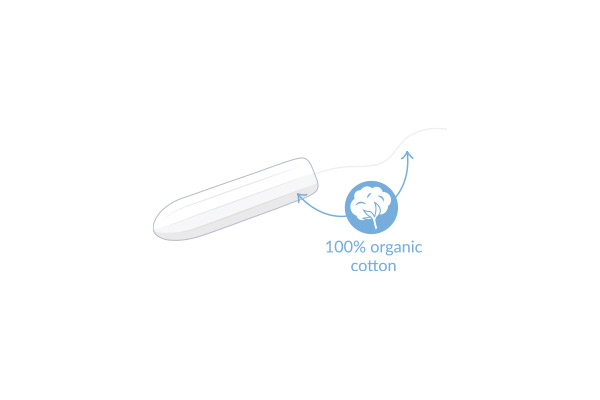
What our customers say
Our customers swear by our products! Thanks to their feedback, we know that Natracare pads and tampons are a trusted choice for irritated and sensitive intimate skin.
Our products are unscented, plastic-free, totally chlorine free, and made from organic and natural materials. Unsurprisingly, Natracare pads and tampons are loved the world over for being soft and comfortable while providing extra-caring protection.
After trying nearly every product on the market, I have finally found one that agrees with my body. I no longer have rashes, itchiness or leaking problems. I feel healthier and more confident.
Using Natracare has really solved my southern hemisphere itching situation
Honestly the best cotton pads, panty liners or tampons I’ve ever used, and so much better for my body too.
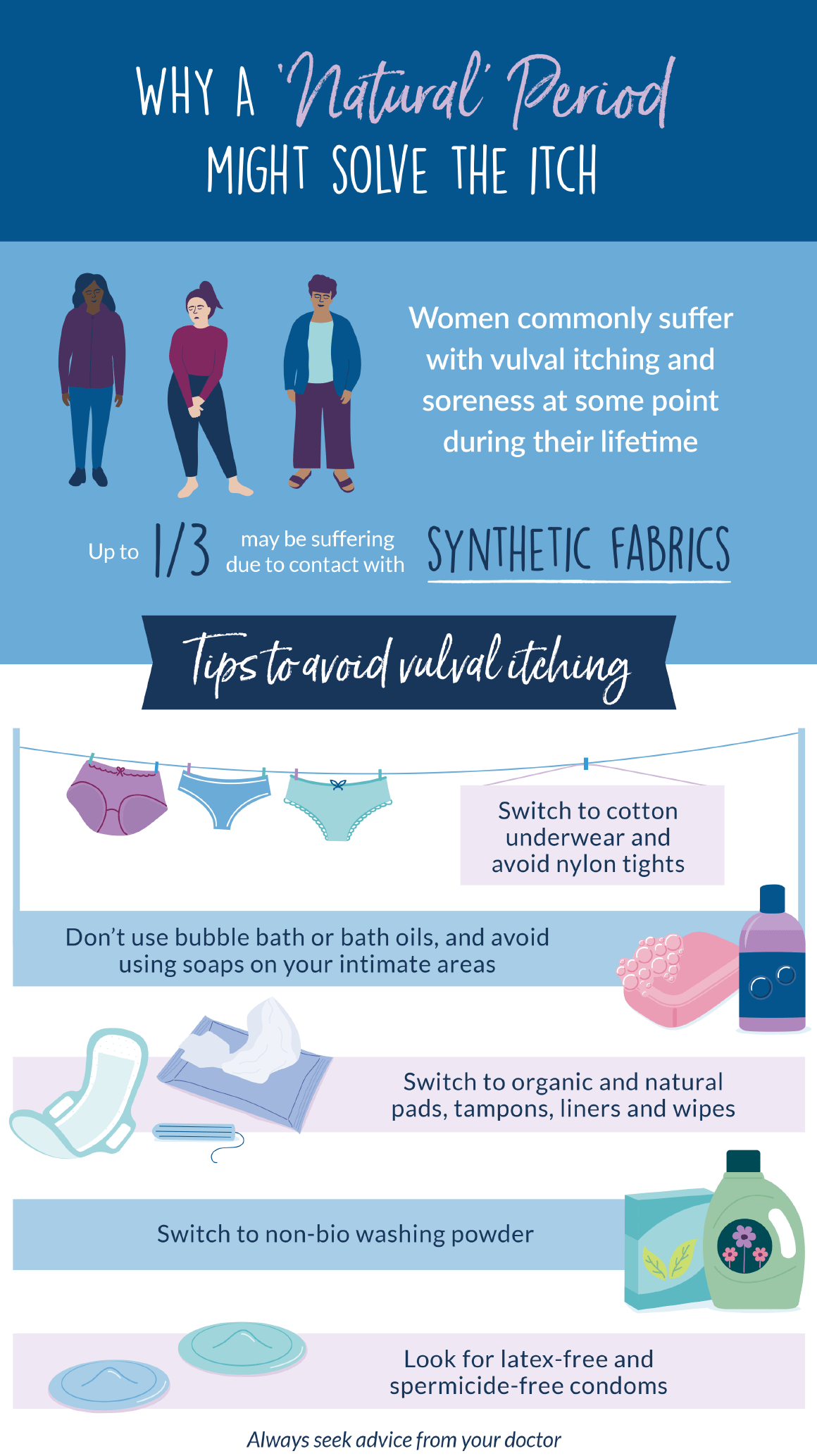
Are you a healthcare professional?
We can help you give your patients the information they need.
Did you know that:
- According to the NHS (the UK National Health Service), symptoms of intimate health conditions like vulvodynia and vaginitis can be reduced by avoiding the use of scented intimate health products.1
- Skin humidity is one of the most significant aggravating factors for dermatitis development. Period and intimate health products that stop skin from breathing can create a sweaty, humid environment that might promote dermatitis.2
67% of doctors asked said they recommend natural, chemical free pads and tampons to patients. 30% even recommend them as a treatment for dermatitis.3
We work with a variety of healthcare professionals including dermatologists, gynaecologists, and midwives. Contact us for sample packs of our plastic-free, fragrance-free incontinence pads, menstrual products, and maternity and nursing pads for patients.
References
- nhs.uk – Vulvodynia (vulval pain) – NHS; Vaginitis – NHS
- Bo Runeman, Clinics in Dermatology, 2008 – Skin interaction with absorbent hygiene products
- Natracare, 2007 – Vulval Allergic Dermatitis Study. Total sample size was 126 doctors. Fieldwork was undertaken between in 2007. The survey was carried out via a questionnaire distributed to doctors in Canada and the UK.
Explore our Products
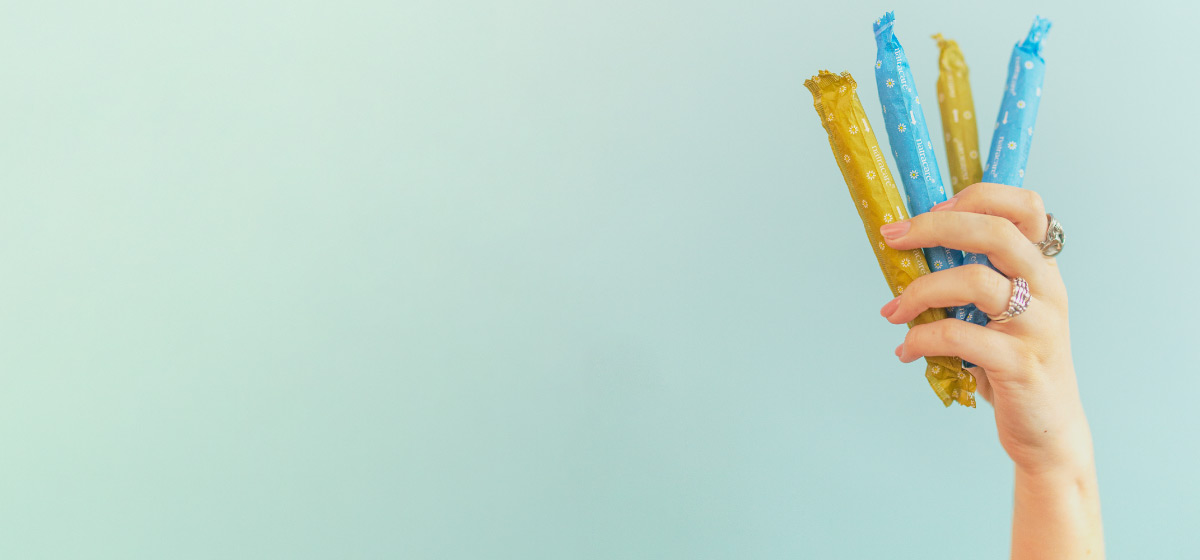
100% certified organic cotton
— and nothing else
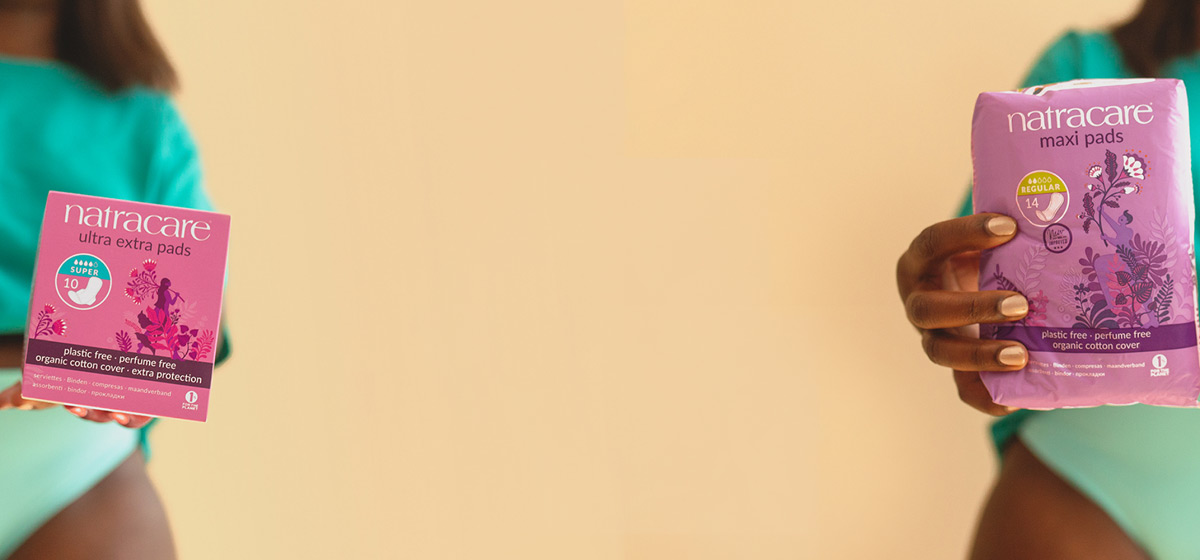
Plastic free pads
to rely on every month
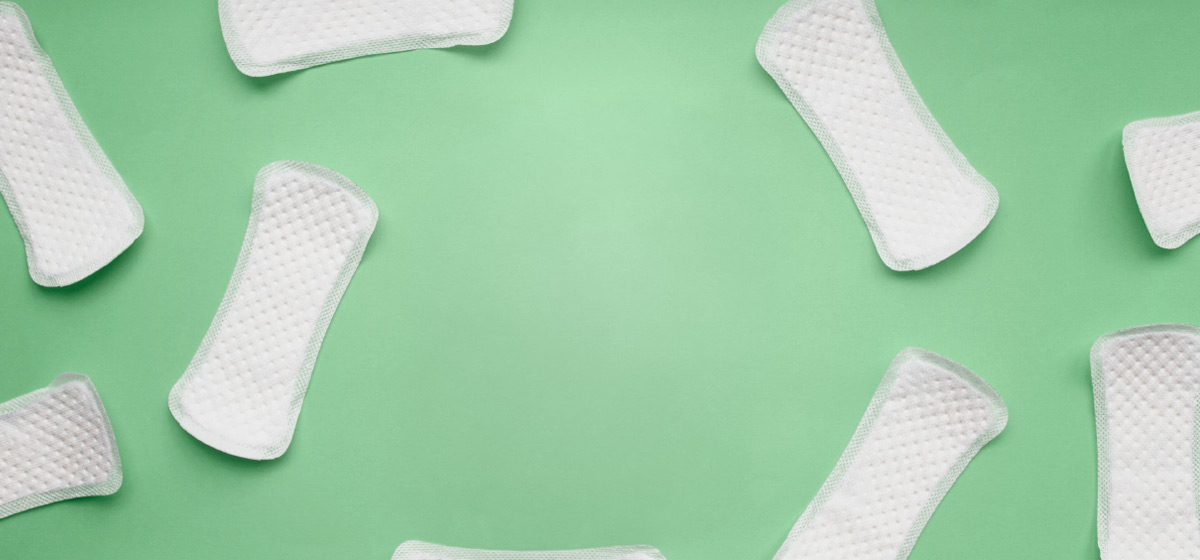
Soft & breathable natural
protection for everyday
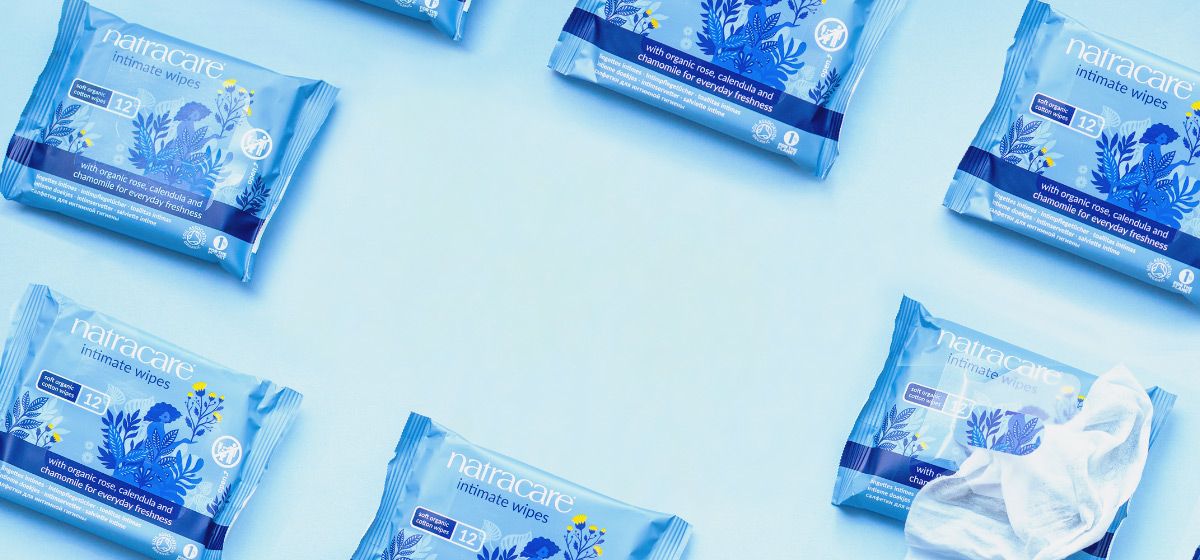
Biodegradable, organic &
natural cleansing wipes
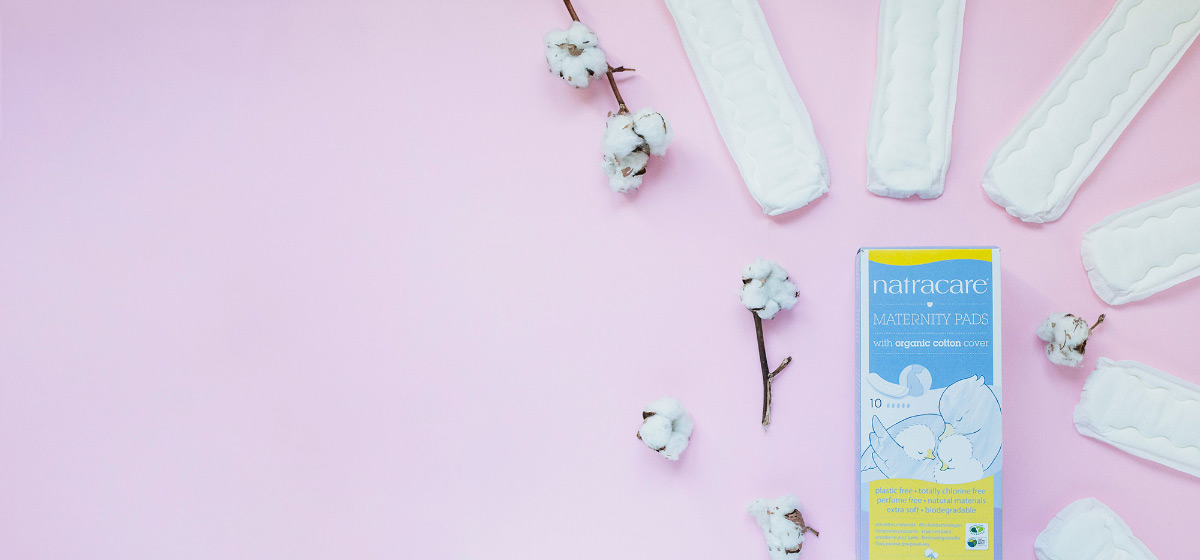
Natural postpartum pads &
organic baby wipes
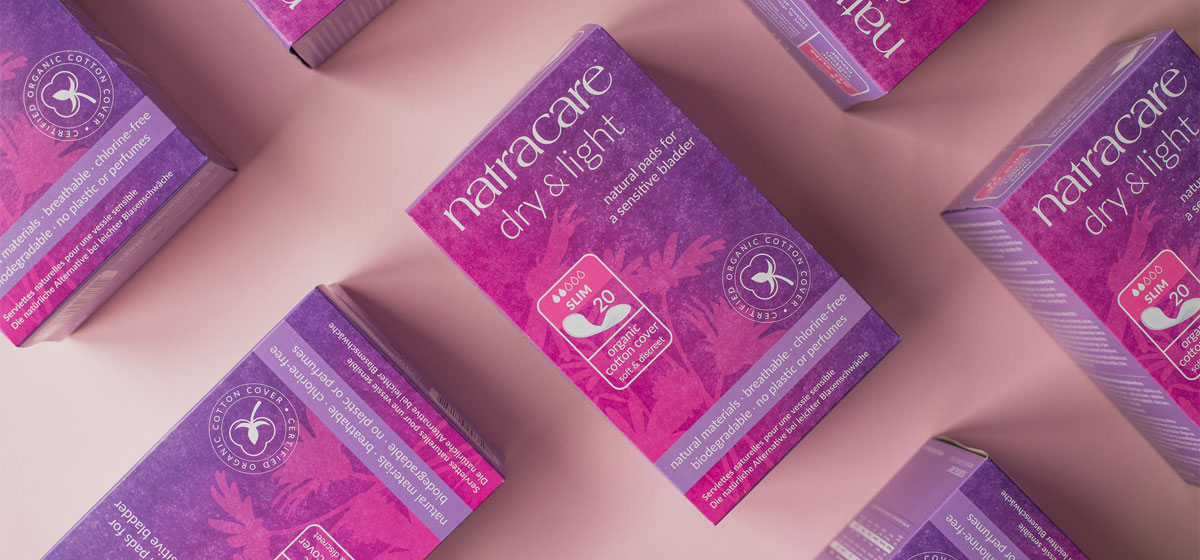
Sensitive natural pads
for light bladder weakness
